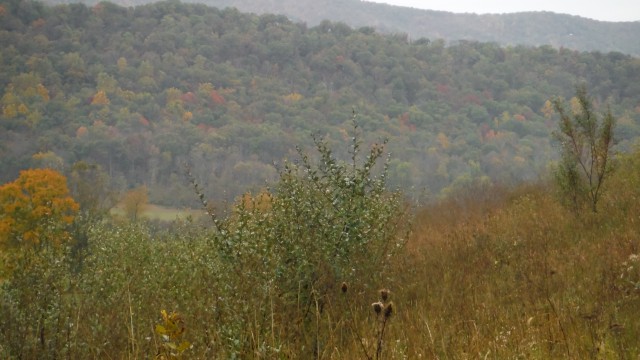
The pawpaw is a true native to North America and has a long history in the United States. The fruit of the pawpaw was a key component of American Indian diets; indeed, the Shawnee even had a “pawpaw month” dedicated to the fruit in their calendar (Austin). Later, the Spanish discovered the pawpaw in 1541. The first European mention of the pawpaw dates to Hernanado de Soto’s 1540 Mississippi expedition, where a fellow traveler noted the fruit being cultivated by American Indians (Staub). Later, we learn from journal entries that it was the pawpaw that fed the Lewis & Clark expedition on their return trip in the fall of 1810. In fact, pawpaw fruits and nuts saved the expedition from starvation and death when in western Missouri their rations ran low and no game was to be found. Further, at least two U.S. presidents favored pawpaws: George Washington reportedly enjoyed them as his favorite dessert, and Thomas Jefferson was known to have grown pawpaws at Monticello where he too enjoyed the delightful fruit. However, pawpaws did not become popular in Europe until the end of the 20th century. During the Great Depression, the pawpaw was also frequently consumed as a substitute for other fruits and were thus called the “poor man’s bananas” (Bales). Though the pawpaw continued to be an important fruit in the North American diet, interest waned after World War II with the introduction of other fruits. Nowadays, most pawpaws are very difficult to find outside of a few local farm markets and is why ONF takes pride in bringing this one true American fruit to our customers.
Pawpaws have nonetheless found their way into American folklore. James A. Little wrote (1905) “We can never realize what a great blessing the pawpaw was to the first settlers while they were clearing the great natural forest and preparing to build cabins. Planting fruit trees was rather an experiment for a number of years. The pawpaw and a few other wild fruits of less value, were all their dependence so far as fruit was concerned. Well do I remember sixty or more years ago my father would take his gun and basket and go to the woods and return in the evening loaded with pawpaws, young squirrel, and sometimes mushrooms of which he was very fond. But there will never be a recurrence of those days which were the happiest of my life.” Pawpaws also have found their way into Appalachian songs. The folk song “Way Down Yonder in the Paw Paw Patch” celebrates unselfconsciously the prominence of the pawpaw in the lives of pioneers who settled the valleys of the Southern Appalachian Mountains and the greater Ohio River territory. In fact, Pawpaws have been such an integral part of our lives, many places in the US are named after the pawpaw, which include Paw Paw, WV; Paw Paw, MI; Paw Paw, KY; Paw Paw, OK, and numerous others towns in Illinois, Ohio, and Indiana. Here at ONF, we are doing our part to bring this once forgotten American fruit back to the dinner tables across America.
Resources:
Austin, Daniel F. Florida Ethnobotany. Boca Raton (Fla.): CRC, 2004. Google Books. Web.
Bales, Stephen Lyn. Natural Histories: Stories from the Tennessee Valley. Knoxville: University of Tennessee, 2007. Google Books. Web.
Staub, Jack E. 75 Remarkable Fruits for Your Garden. Layton, Utah: Gibbs Smith, 2007. Google Books. Web.

